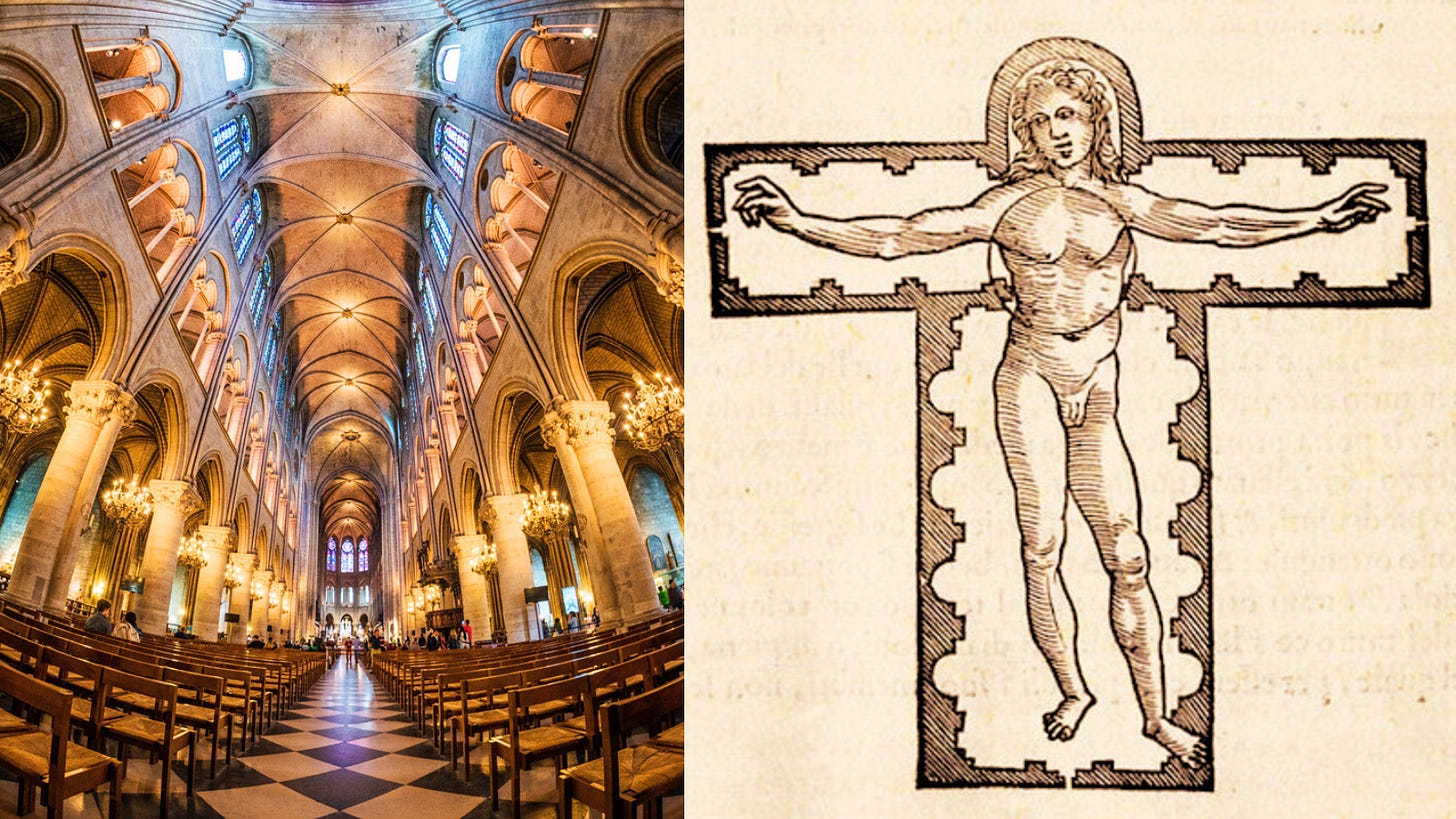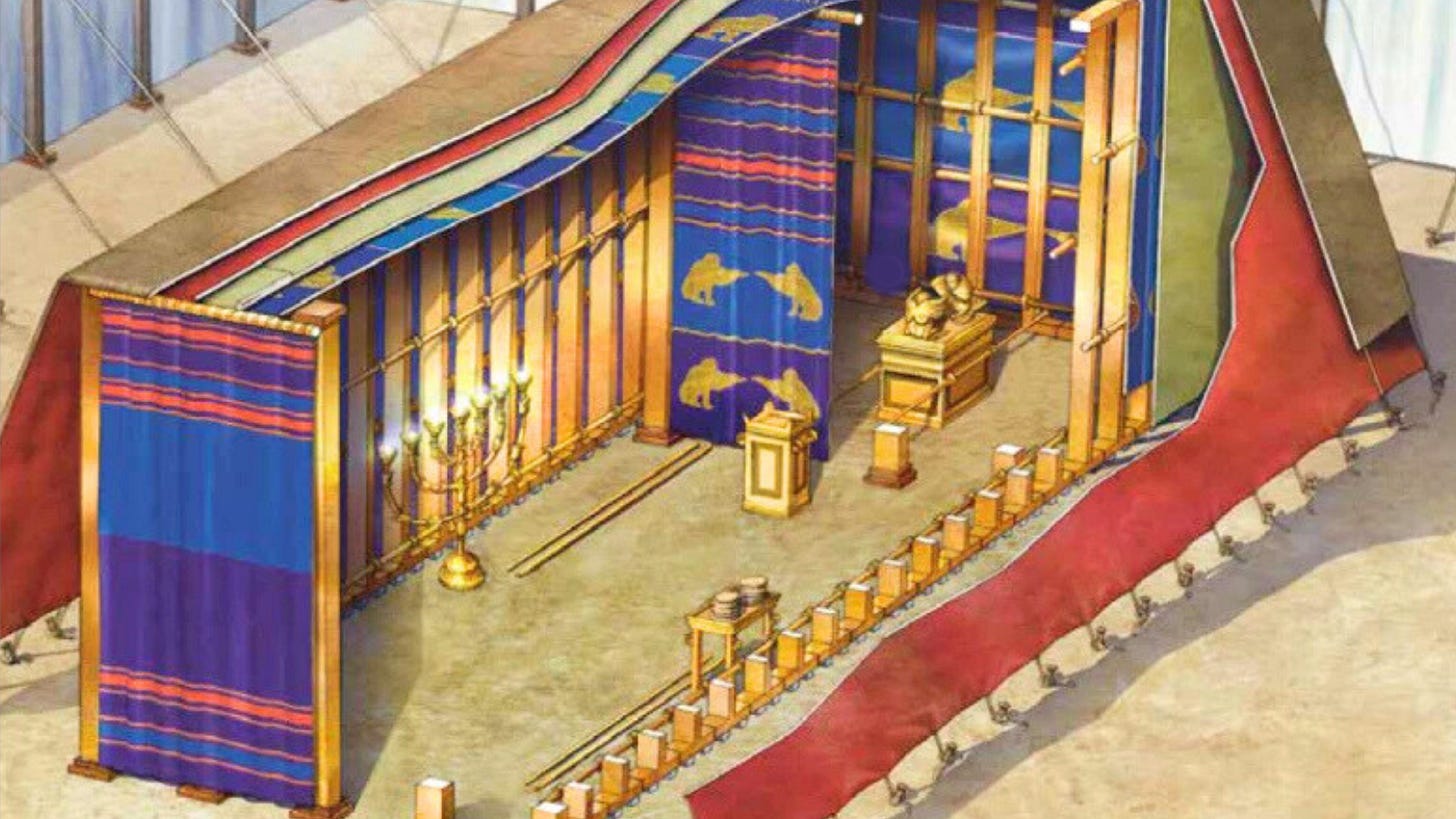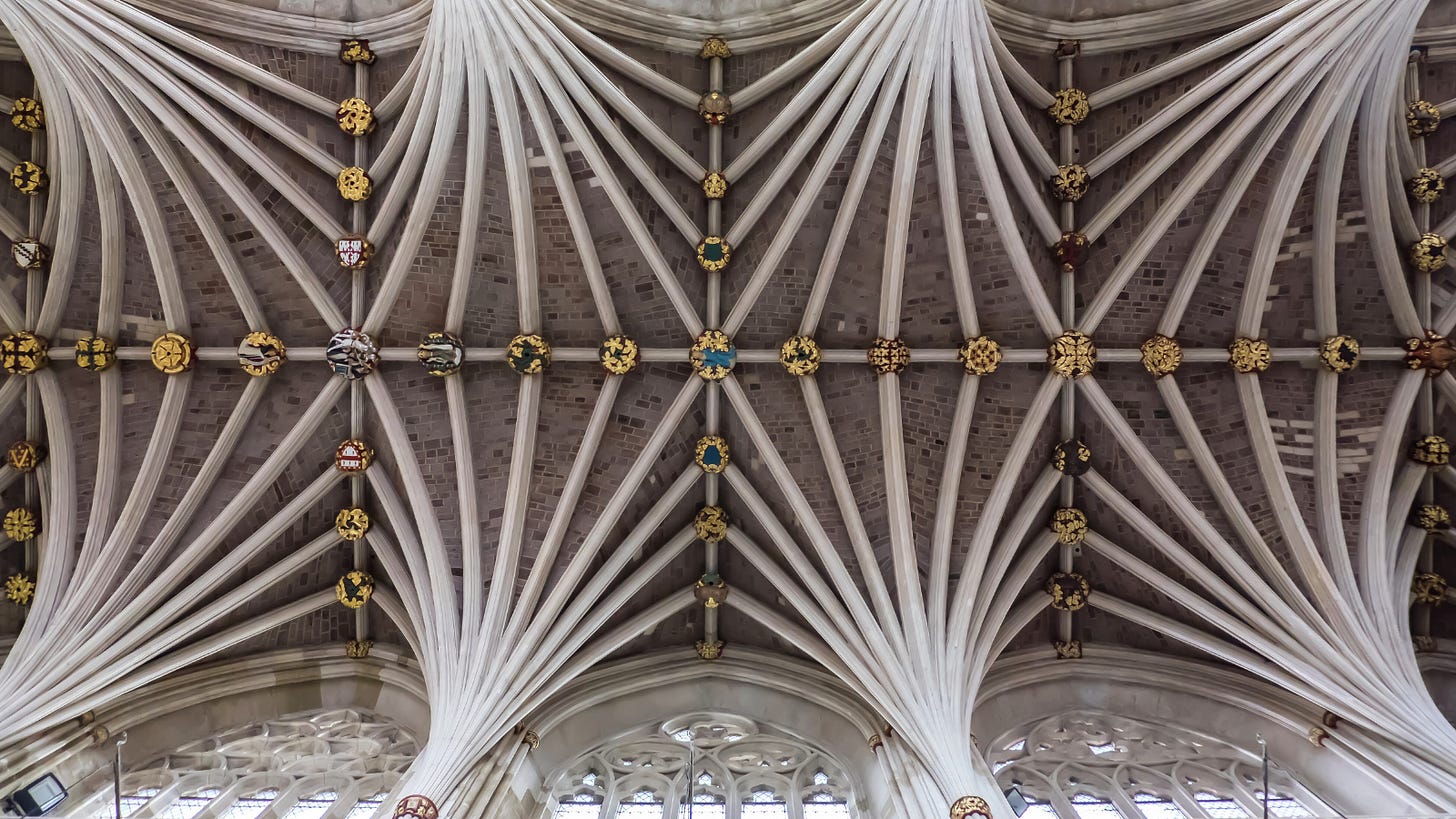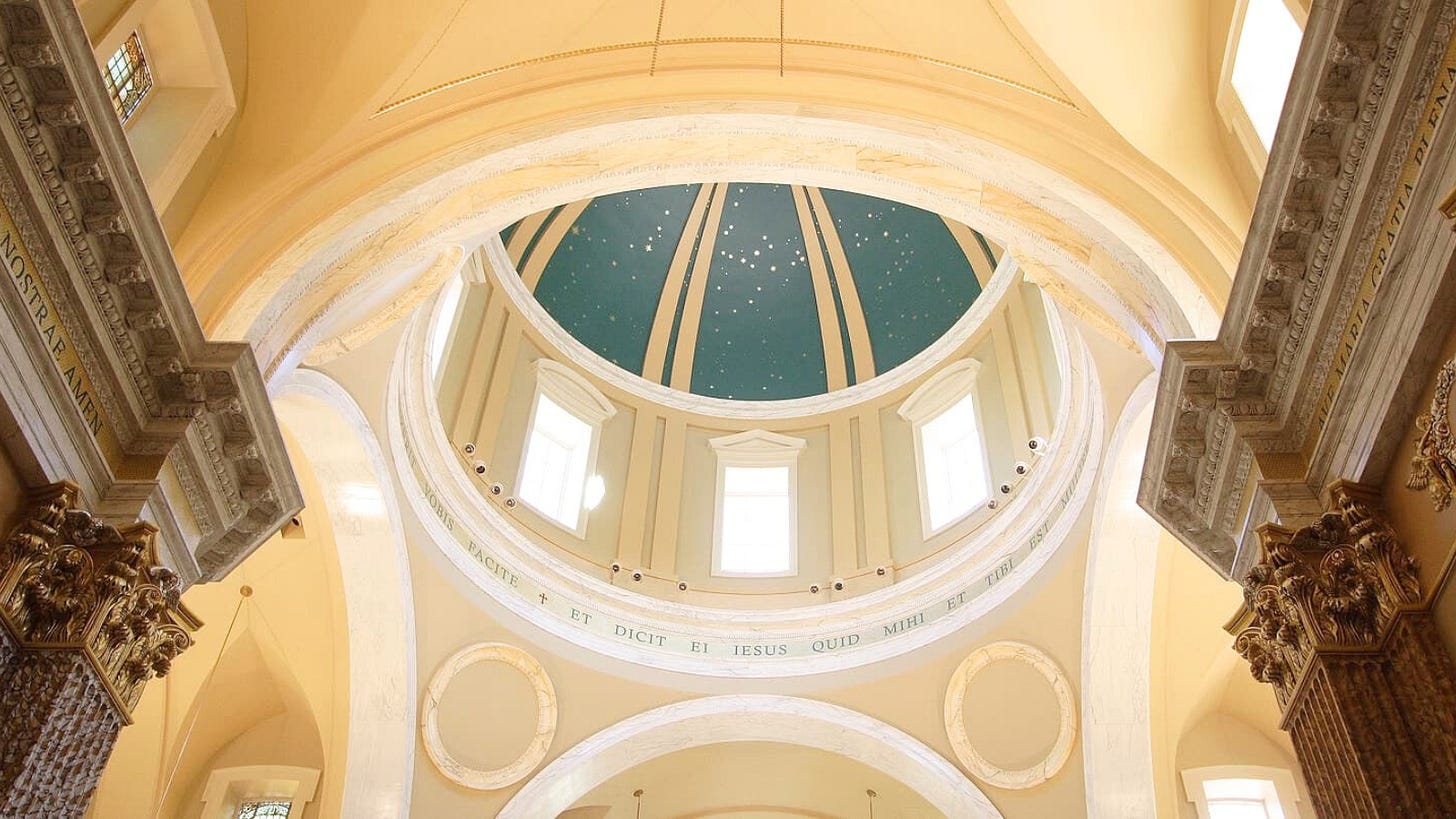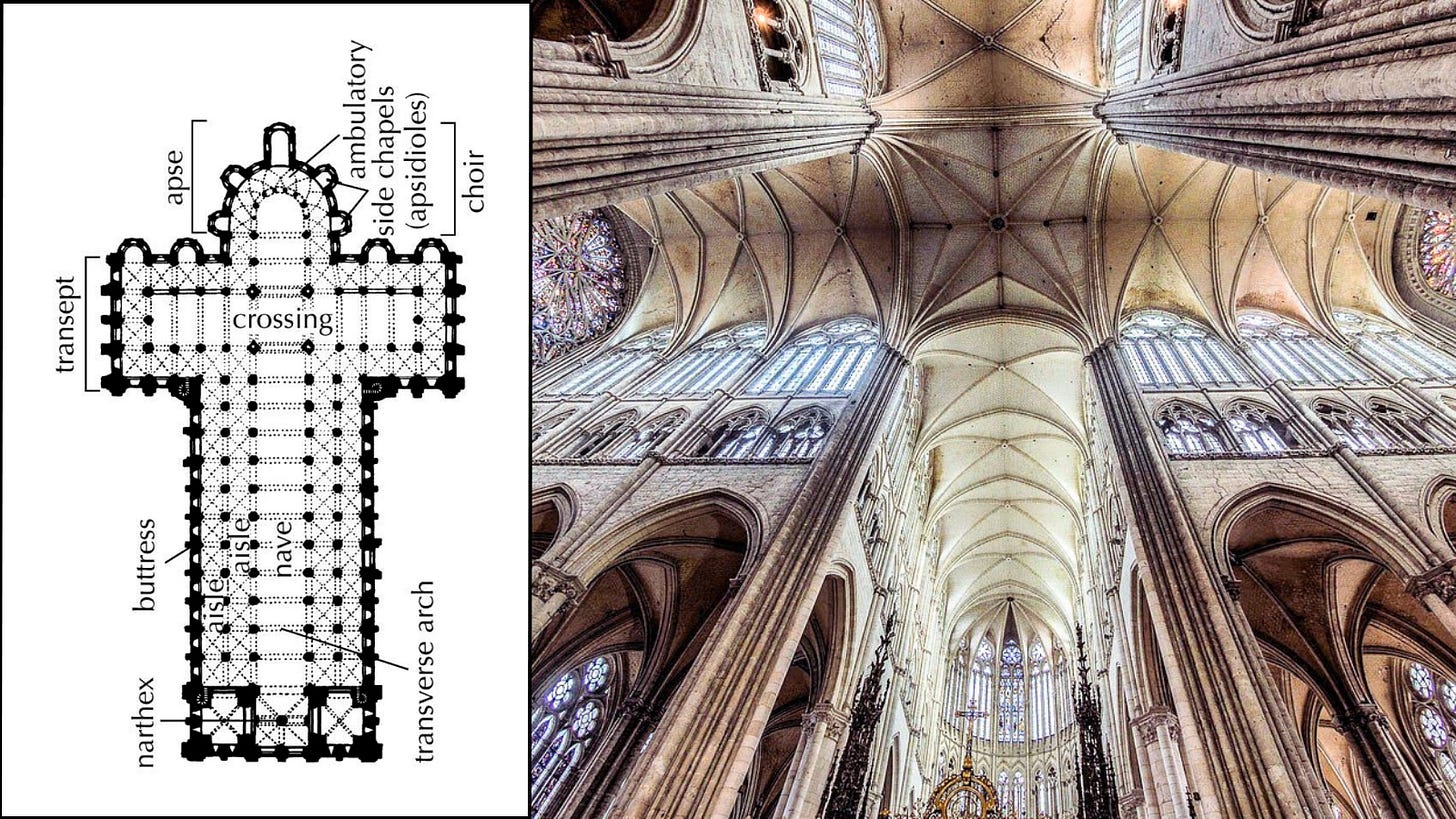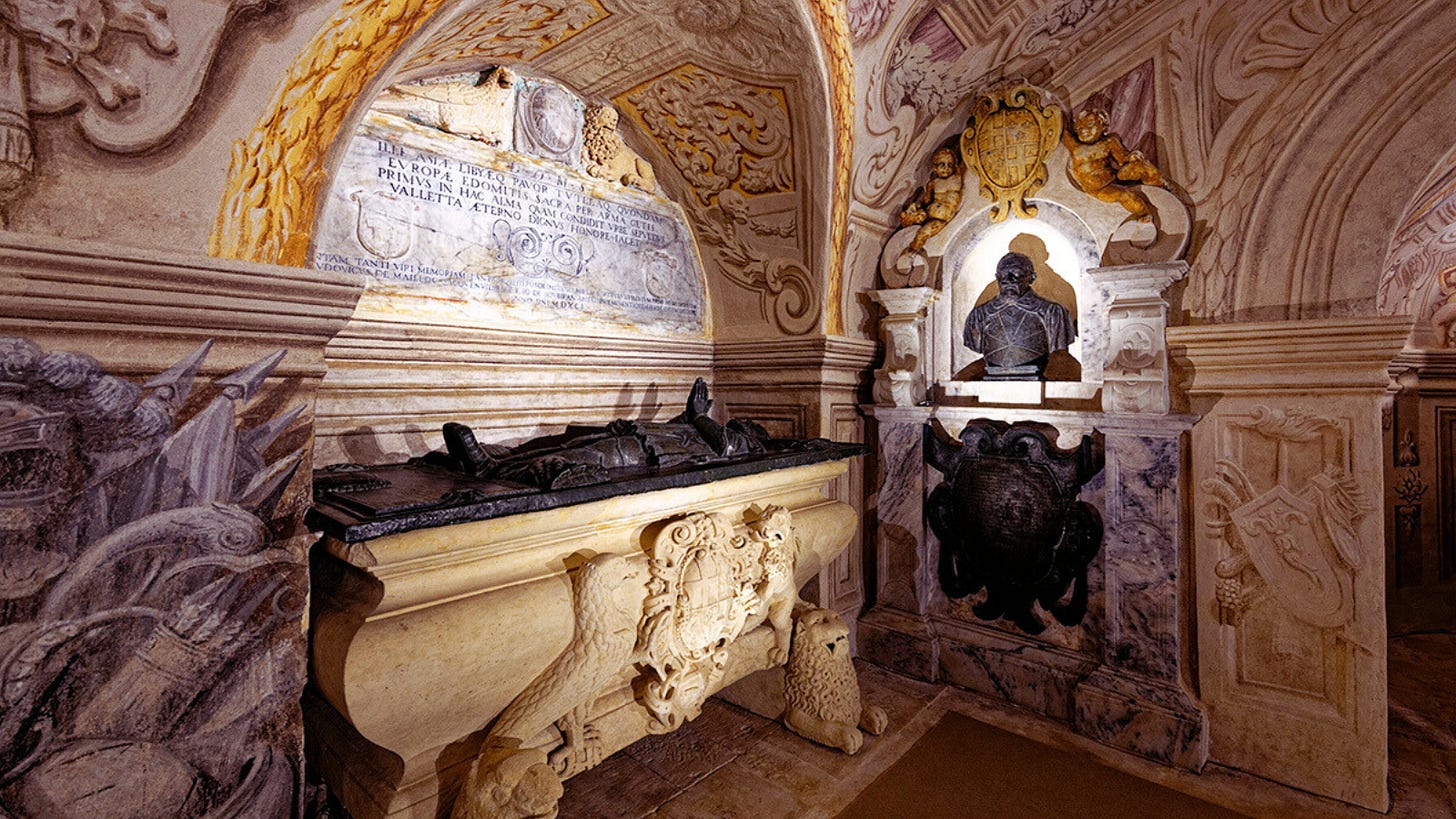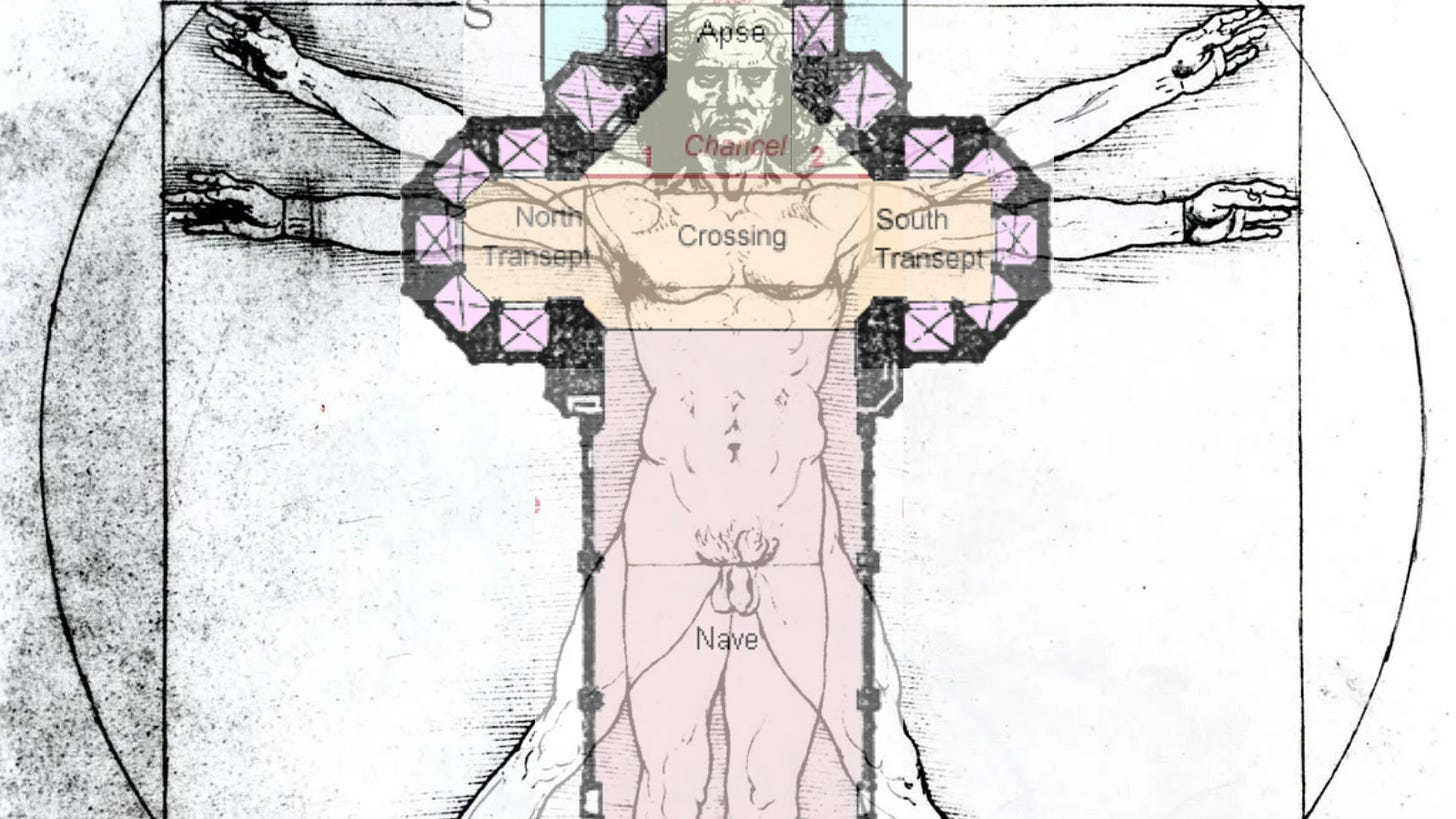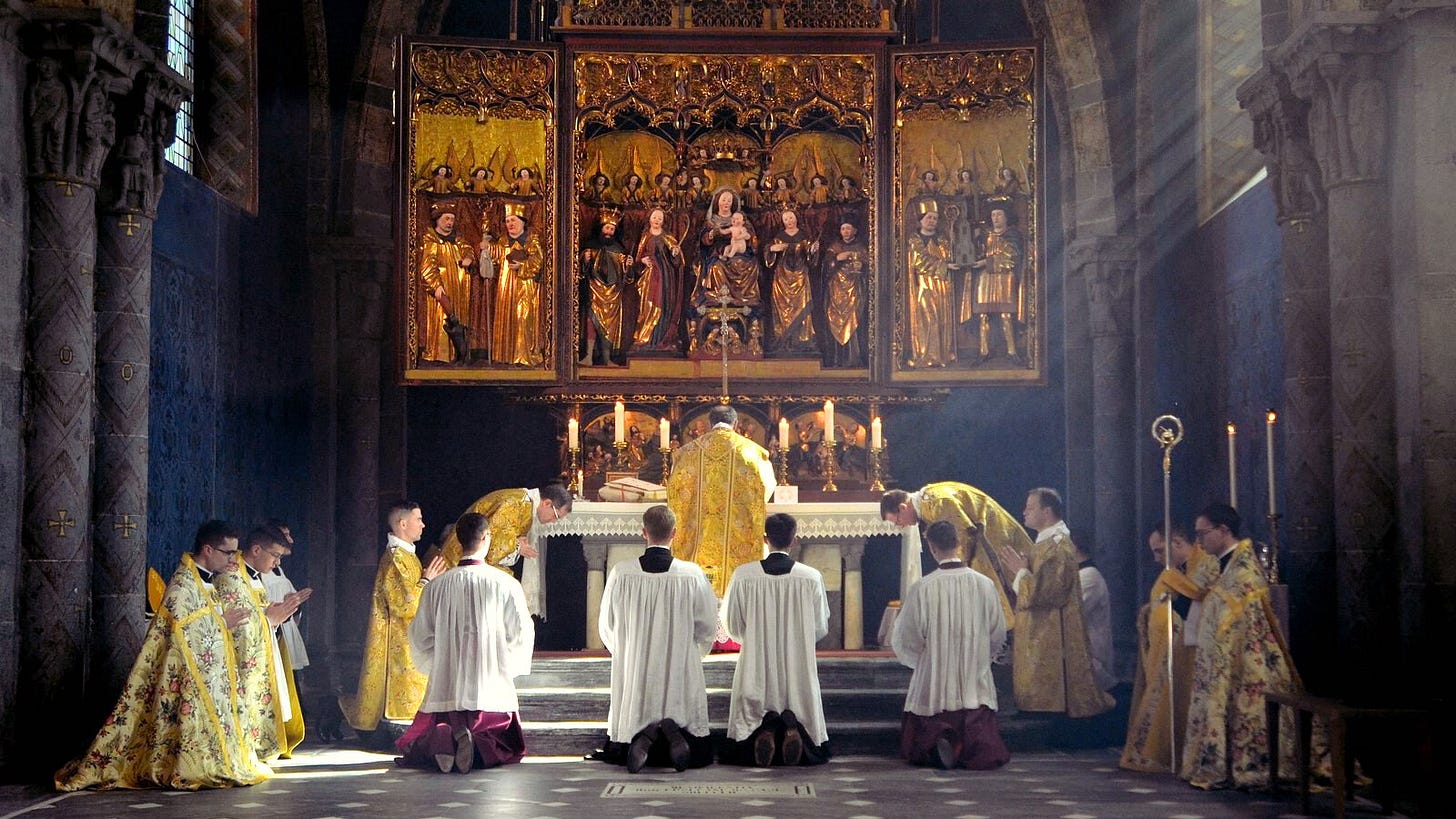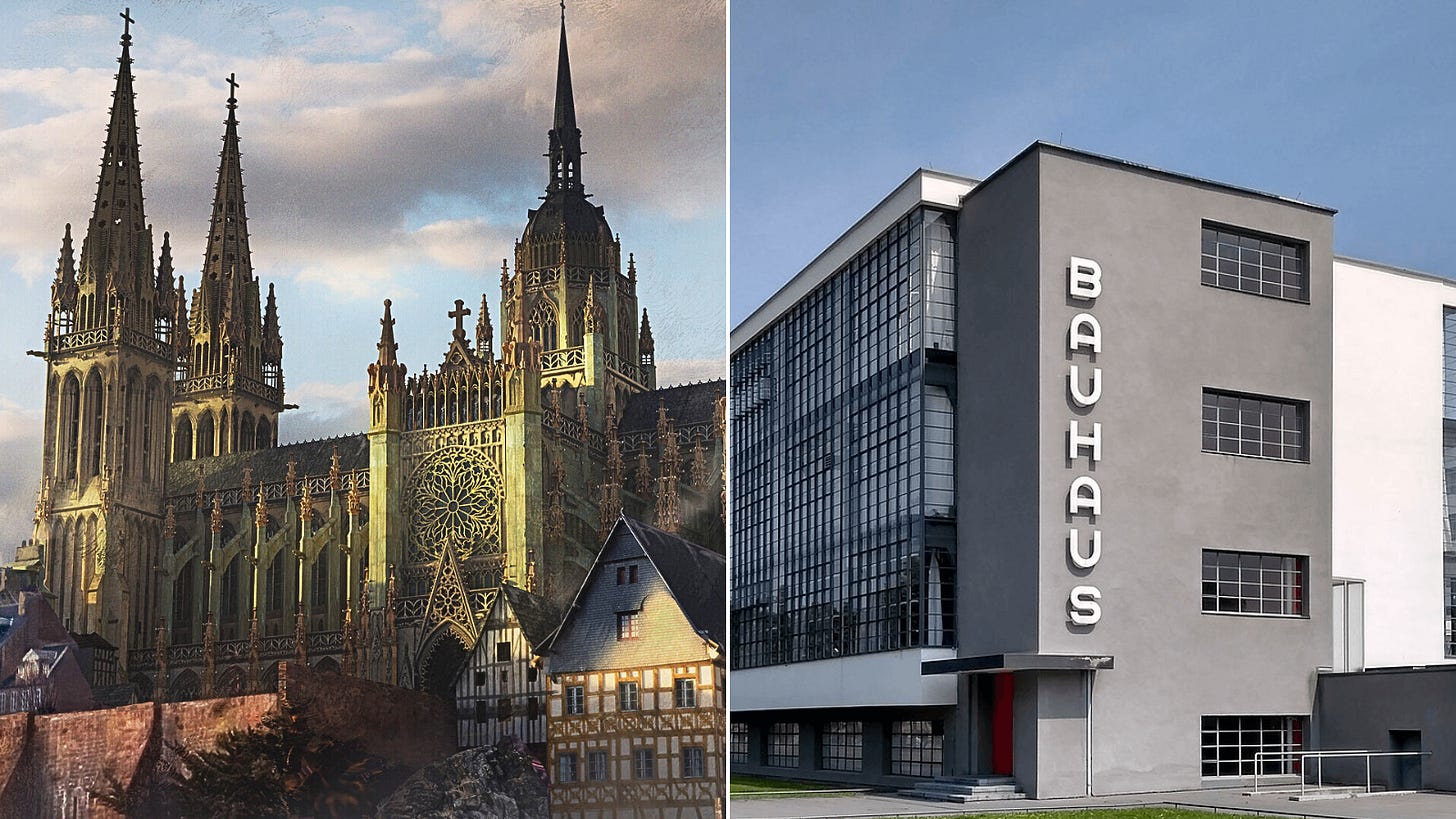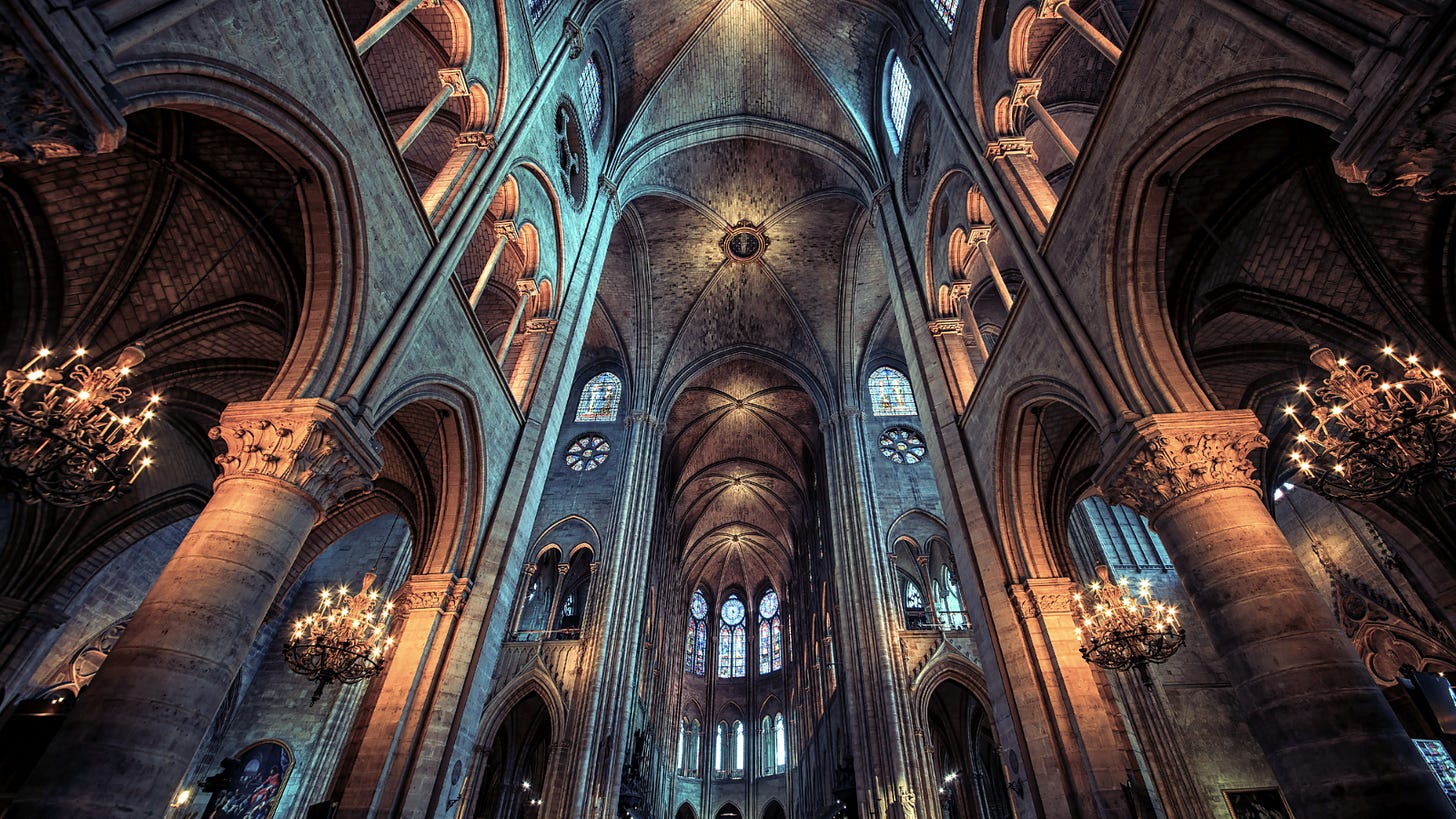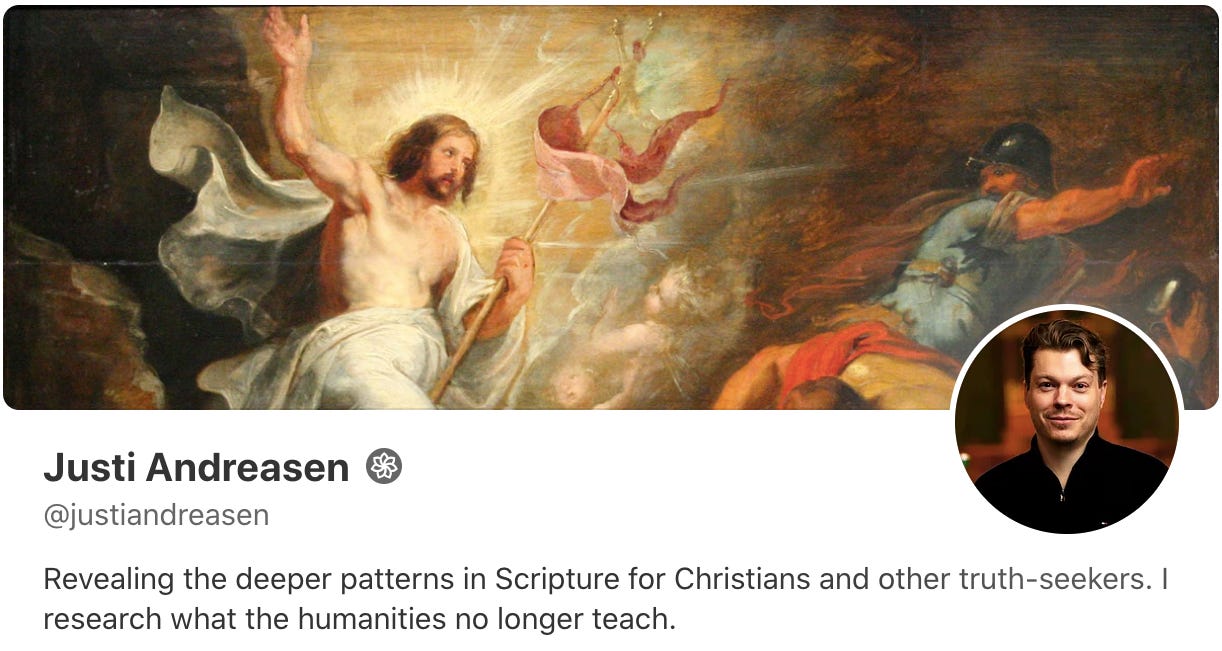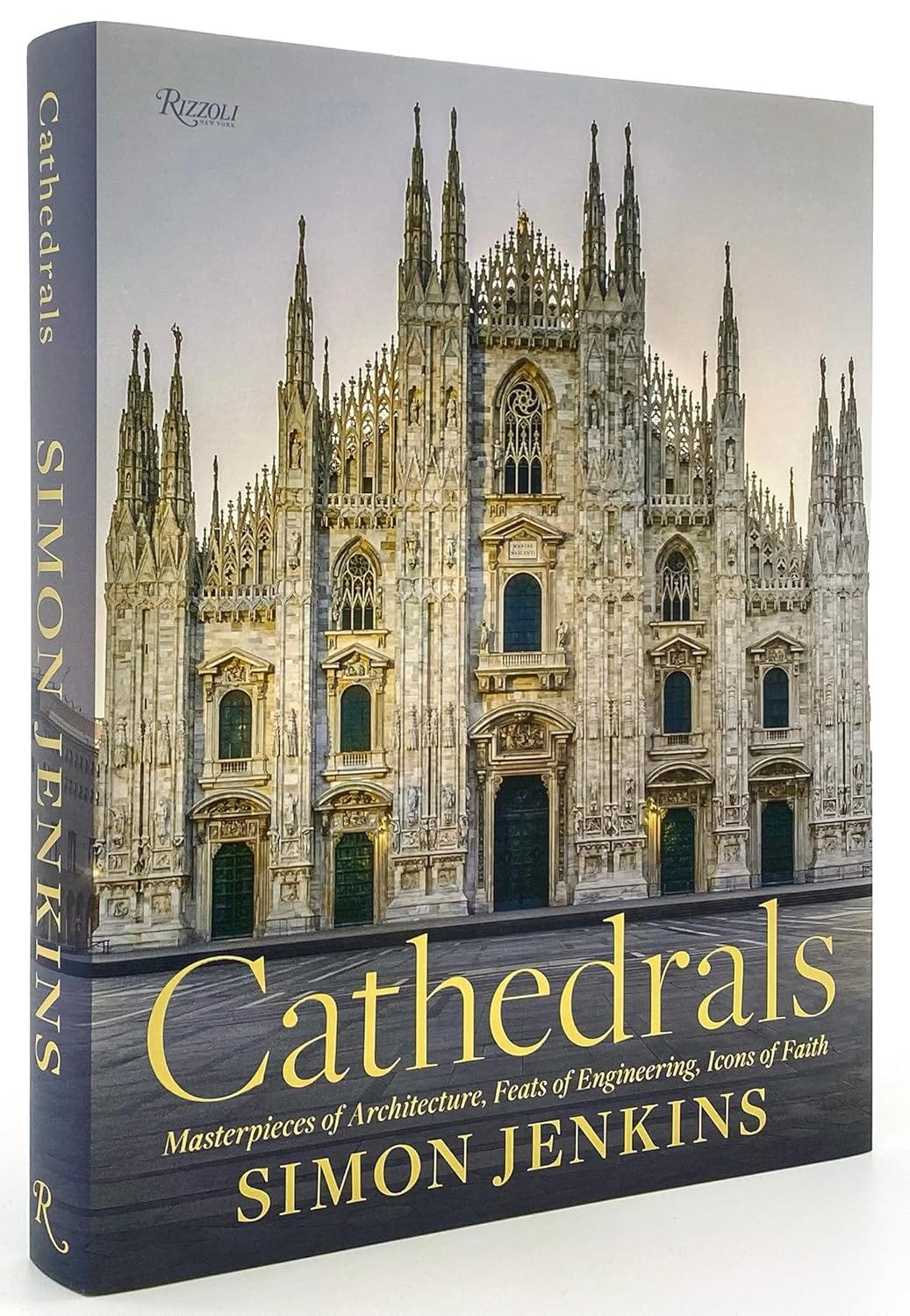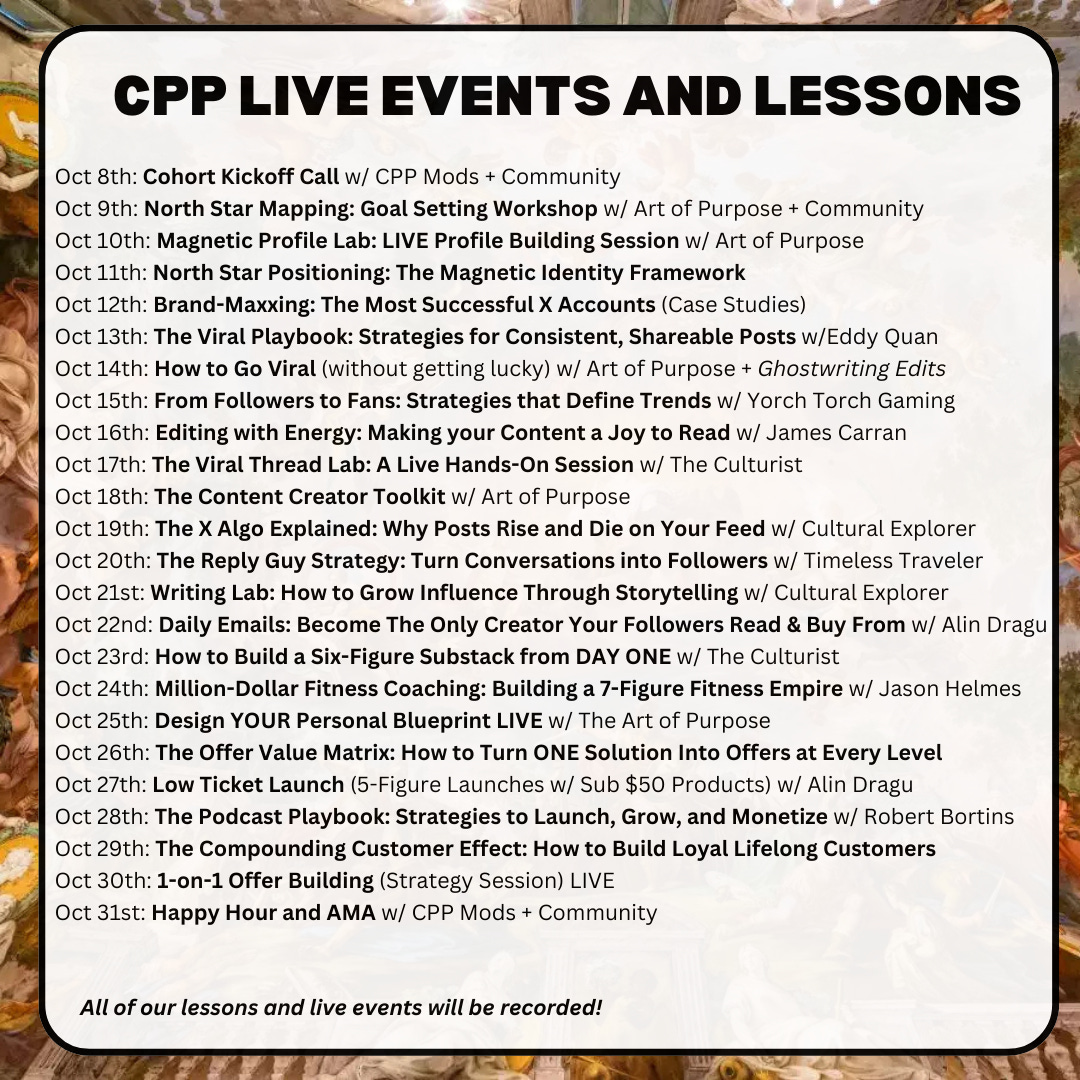The Anatomy of a Cathedral
Was the Blueprint of the Church Designed to Mirror Us?
Next time you step into a cathedral, pause.
What you’re entering isn’t just a religious building. It’s a body. Not metaphorically, but architecturally. Once you see it this way, you’ll notice how everything mirrors your own body, and how moving through its space becomes a living, participatory experience.
Medieval builders weren’t designing abstract structures for abstract worship.
They were building the mystical body of Christ in stone, proportioned according to the human form, because they believed the human body itself was the divine blueprint.
How the Church Became a Living Body
The idea of the Church as a living body has deep roots in Christian thought.
In the Old Testament, the tabernacle hosted the invisible presence of God. Unlike temples with a physical statue, its structure (the curtains, the Holy of Holies, and its proportions) functioned together as a body capable of holding the divine.
In the New Testament, St. Paul describes believers as the “body of Christ,” with Christ as the head.
Augustine made this idea concrete by linking Noah’s Ark, the Church, and the human body. He noted the Ark shared exact proportions with the human body and so held life, making it a precursor to the Church, which was built to nurture the faithful.
One vivid example is the Ark’s side door, which prefigures the wound in Christ’s side.
During the medieval period, these concepts guided cathedral design. Every layout, proportion, and orientation reflected divine order, as master masons drew on theological writings to create spaces that embodied the Church as a living body.
Torso, Ribs, and Spine
Most visitors walk into the nave and assume it means “ship” (from Latin navis).
And as mentioned, this ark symbolism is true, but it also refers to the body’s central cavity, the torso. The nave is the space of the chest, protected by ribs (the vaulted ceiling), with a central aisle acting as the spine.
From here, everything branches outward and upward.
The Cathedral’s Skull
Move toward the apse or dome, and you’re approaching the head.
The rounded dome reflects the shape of the cranium, while the altar below symbolizes the mouth, where the Word is spoken and consumed in the Eucharist. In Byzantine churches, the apse typically displays Christ Pantocrator, the face of Christ, and what we might call the “head of all.”
Light entering through clerestory windows symbolizes divine illumination entering the mind.
The Church Stretches Out Its Arms
The cruciform layout means that as you walk forward through the nave, you intersect the transept: the arms extending to the left and right.
These are the arms of Christ on the cross. The space where nave and transept meet is the heart of the building, representing the organ that gives life to the whole.
Some transepts contain chapels for saints or martyrs, mirroring the diversity of functions in our own limbs. Like blood circulating through the arms, worshippers move in and out through these spaces, always returning to the center.
Bones Below, Breath Above
Look down. Beneath many cathedrals lie a crypt, often containing the bones of saints. These aren’t ornaments. They are the skeletal foundation. The building is a body built on bones.
And above, the vaulted ceilings create acoustic spaces. As we sing, we fill them with our breath. Church hymns - drawn out and resonant - were composed for the huge scale of these “stone lungs”. As voices rise and echo, the cathedral breathes and comes alive.
Even the organ, with its pipes and bellows, mirrors lungs and vocal cords. Artificial breath animating the building itself. That is why this specific instrument fits so well in a church.
Geometry That Feels Like Flesh
So, medieval architects applied the structure found in the human body to the structural elements: nave, dome, transepts, crypts, vaults.
The human body was their measuring rod. The circular apse and dome (heaven) and the square nave with its extended transepts (earth) came together through the form of the human being, and thus, through the cathedral.
This wasn’t an aesthetic preference. It was theology in action. God created humans in his image. Therefore, they should make sacred space in the image of humans.
The Church is Alive Because You Complete It
When Paul said the Church is the body of Christ, medieval architects took him literally.
The building was a skeleton. The congregation was flesh. Worship wasn’t just spiritual. It was incarnational. Saint Augustine understood the Church as the visible manifestation of Christ’s body, through which the faithful encounter His presence. When Christians filled the cathedral, they animated it. It became alive.
Medieval architects were “body builders” - not of muscle, but of mystical flesh. They understood their craft as participating in the divine act of incarnation.
Why Modern Buildings Feel Spiritually Empty
Today, we build boxes.
Functional. Efficient. But spiritually vacant. We’ve lost the understanding that space is not neutral. Sacred architecture mirrors us, holds us, and transforms us.
Medieval architects weren’t nostalgic romantics.
They were theologians with chisels. Their cathedrals teach us that to build sacred space is to reflect the human form, because that is the ideal form through which to meet the divine.
Upward and Outward
When you next walk into a cathedral, don’t just look up; look inward.
You’re walking into a human body, a body that mirrors your own. You must go through your own form to encounter God.
The church becomes an extension of man.
Lifting you upward and outward.
Connecting you to something greater than yourself.
This article is brought to you by Justi Andreasen.
For Content Creators and Executives Building their Brand…
It is not often I promote programs like this…
But I’ve gone through Create Publish Profit before, and it delivered.
For me, it helped me get to 150K followers on X, launch my first paid offer, turned tweets into paying clients, and today it has me generating three online revenue streams.
And here’s the thing: it’s not just another course. It’s a hands-on mentorship.
Run by Art of Purpose (Dino) on X (@creation247) alongside Jason Helmes, The Culturist, Eddy Quan, and more — mentors with over 2.5M followers combined. These aren’t wannabes. They live, breathe, and build online full-time.
Why share this? Because the next CPP cohort just opened, which is to start October 8th. If you’re serious about growing on X, monetizing your ideas, or building something meaningful, this is the room you want to be in.
I’m joining this round again because not only the lessons are valuable, but it is also a great networking opportunity. Additionally, I will be teaching this round about the X Algorithm.
They’re capping it at 100 people. It will sell out fast. If you want to lock in your spot before prices go up or seats vanish, check it out here:
👉 Create, Publish, and Profit!
If you have questions, please message me using the link below:
Talk soon,
The Culture Explorer


